What is the most important thing that decides the success or failure of a blog? It’s the consistency in content creation. No doubt when it comes to online success content is the king. But if you do not have consistency in creating content. Your blogging journey is heading towards a disaster.
Is there any tool that can ensure consistency and help you come up with a lot of content ideas? Yes, we have such a tool. It is a must-have tool for your blogging success. This tool is an editorial calendar.
In this article, we will guide you in creating an editorial calendar. It is also known as a content calendar.
What is an Editorial Calendar?
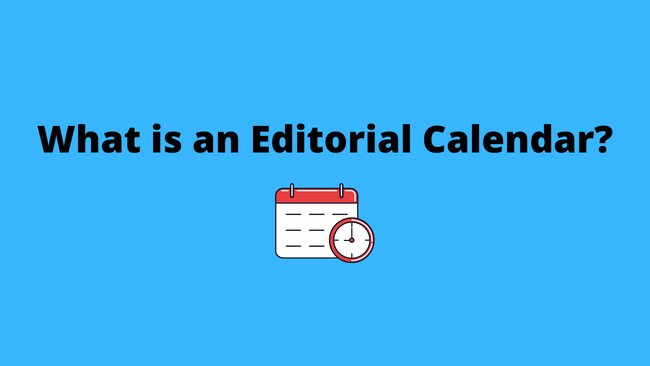
An editorial calendar, also known as a publishing schedule. It is a tool for planning, organising and controlling the process of content creation. In simple words, it helps you track and plan ahead your content so that you never fall short of post ideas.
You are able to map out your content creation from generating a content idea to writing it down. Writing is the most challenging part of the content creation process. But it becomes easy when you have a definite schedule to follow.
What are the Benefits of a Content Calendar?
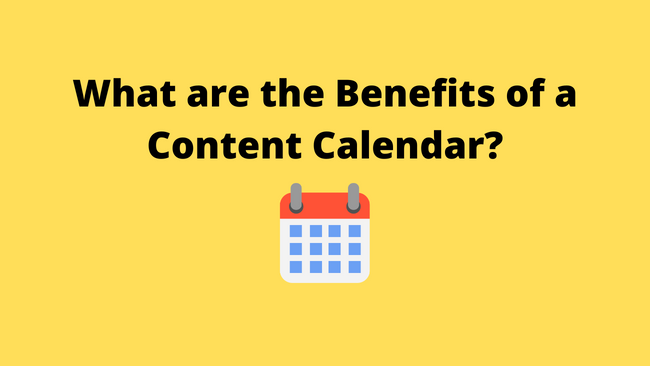
You might be thinking that why is a content calendar important. How will it benefit my blogging or content strategy? Here are a few of the advantages of having a content calendar.
Helps you Set Goals
With a content calendar, you can plan the content in advance. Once you have a list of articles on the calendar. You can assign a publishing date. When you set up a deadline for a task you are more likely to achieve it. This helps you in setting measurable and achievable goals.
No shortage of Content Ideas
With the help of a content calendar, you can plan ahead of the topics for your blog. This helps you in saving a lot of time. As you don’t have to waste time coming up with content ideas. You now have to focus on improving the quality and style of your content.
Better Control of Content
An editorial calendar gives you better control over your content. It gives you control over the quality and theme of your content. You are able to see the big picture and the way the content fits into the picture. This enables you to control and fine-tune the message that you want to convey to your audience.
Consistency in Content Creation
Inconsistency in creating content is one of the most common blogging mistakes that kill a blog. According to statistics, 70% of bloggers lack consistency in creating content. This inconsistency arises from little or no planning of your content. When you have content planned for the next 6 months. There are more than 90% chances of survival of your blog for the next 6 months.
Helps You Find Content Gaps
As you plan and prepare an editorial calendar you will get a complete view of the content. It helps you find the content ideas you may miss out on. You can also explore new angles and further improve your content strategy.
Better Time Management
A content calendar helps you plan out your content in advance. You save the time spent brainstorming new blog post ideas. Now you have to sit down and start writing. It frees up your time so that you can concentrate on the quality and style of your writing.
Improves Google Rankings
When you plan out the content in advance. You will most likely keep your content around a specific topic. This pre-planning will also have a positive impact on your consistency. Google rewards consistent sites providing all the relevant information around a specific topic.
Improves Productivity
Planning your content in advance will reduce your frustrations and help improve productivity. Now you have to focus on content creation rather than sweating the small stuff. You can keep track of your pending task and ensure their timely completion.
Different Types of Editorial Calendars
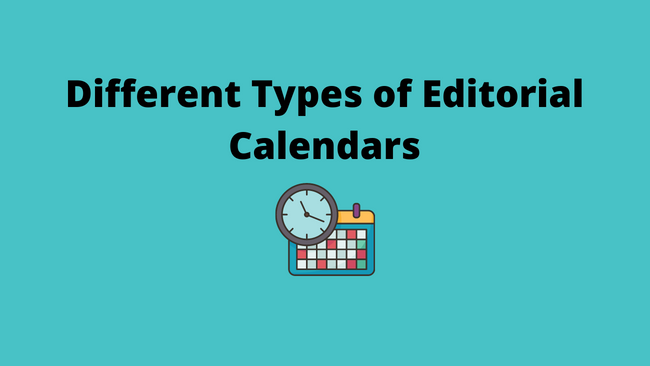
Different types of editorial calendar tools? You may be thinking what is the best tool to produce an online content editorial calendar? Or what are the best tools for keeping track of a content schedule? Don’t worry we are going to cover it all here.
There are many different types of editorial calendar tools. Most of them fall under one of these three categories. Further, these can be free or premium tools
Handwritten
You can create your editorial calendar using pen and paper. For creating a handwritten editorial calendar you can use loose sheets. Draw a table on this loose sheet keeping the elements that you want to track.
The most important part is storing these loose sheets in a folder or file cover. You can also use a dairy or mole-skin planner.
Spreadsheets Online or Offline
Google sheets is the most popular tool among newbie bloggers. The best part is you can access Google Sheets on any platform be it Windows, Linux or even your smartphone.
Editorial Software
There are a lot of software and online services that help in creating and maintaining an editorial calendar. Register for an account and start creating your blogging schedule. You can use WordPress Plugins for creating and accessing blogging calendars from within the WordPress admin area. Some of the most popular online platforms are:-
- Coschedule
- Edit Flow – free alternative to Coschedule
- Trello
- Kapost
- Divvy
As you can see there are a lot of choices for selecting blog editorial tools. You can select the tool as per your comfort or convenience. In the next section, we discuss how to create a content calendar?
How to create a Content Calendar?
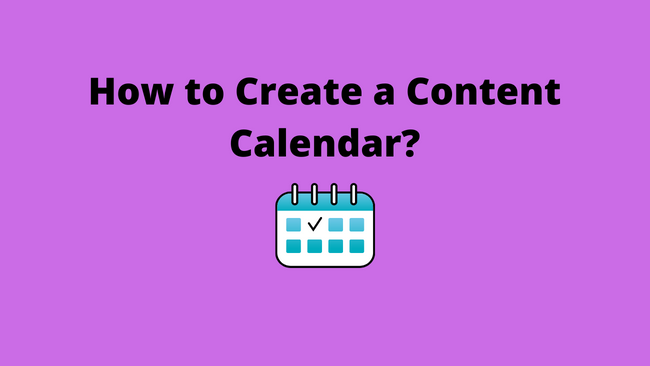
Here we will discuss, how to plan an editorial calendar? And what should a content calendar include?
The creation of a content calendar differs from individual bloggers to team bloggers. It also differs depending on the type of content you are creating or what you need to track. To keep things simple, here we cover how to create a content calendar for individual bloggers.
Before you start creating a content calendar you should select a specific niche or target audience. If you do not have a specific niche check the article on how to find your blog niche with a list of 100+ popular blogging niches.
You should plan the type of content that you will be posting. Is it an article or a video? What type of article or video do you want to create. The content can be How to’s, listicles etc.
In this planning stage, you should chalk out your content creation frequency. That is how often you will be creating the content for your blog.
Always try keeping your calendar simple, too little or too much data will make it difficult to manage the content calendar.
Start with an Editorial Calendar Template
The best way to start an editorial calendar is with an existing template. This will give you a good headstart than starting everything from scratch. HubSpot provides a nice free editorial calendar template for starters.
Next, identify the elements that you need to track. For e.g, here are some of the things that you need to keep track of: –
- Blog Post Title
- Content-type
- Content Format
- Category
- Author
- Where to Publish
- Publish Date
- Status of Post
- Title and Notes
The above exercise will give you a structure for your editorial calendar. So that you can fill it with the blog post ideas.
Put on your keywords researching skill cap to brainstorm content ideas. You can use question-answering sites like quora, Reddit etc. Find the common issues and questions your target audience wants to be answered.
These will give a bucket load of content to write about. But wait!. Before you start writing. Check out if they fall in the categories you want to cover on your blog. If you are starting out you must try focusing on 2-3 categories at the most.
Remove the unrelated and unwanted content ideas from your list. Now you can add the good ones to your editorial calendar.
You can now put your editorial calendar to use. Pick up the first article title on the list and start writing.
How to Use a Content Calendar?
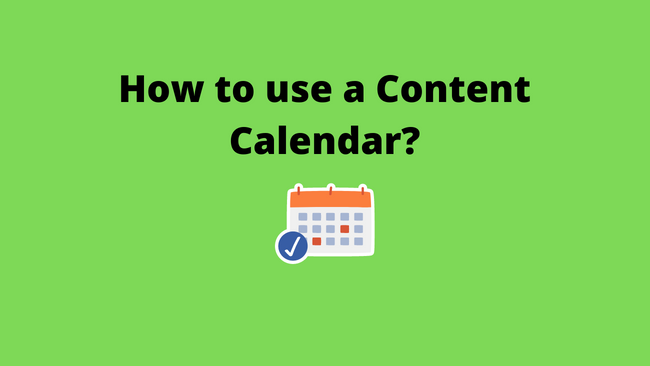
To, make effective use of the content calendar update it. Each time you start or finish a new article you should refer to the content calendar. This will give you an opportunity to update your calendar. For e.g, you can update the publish date or refer to the keywords that you need to target in your post.
You may come up with new content ideas. Make sure to add those ideas to your editorial calendar. Set aside some time every week or month to brainstorm content ideas. And keep updating the same in your calendar.
This will keep you busy with your blogging business and in your blog’s growth too.
Conclusion
In this article, we have discussed the editorial calendar and its benefits. Here are a few of the points that we covered.
- What is an editorial calendar?
- Benefits of a content calendar?
- Different types of editorial content creation tools.
- How to create a content calendar for your blog.
- Using a calendar for long-term success.
You should always start your editorial calendar using a template. This makes it very easy and gives you a quick start. You can customise the template to your own rule as you go.
I hope you enjoyed reading this article. So what are your views on this topic? I would love to hear from you.

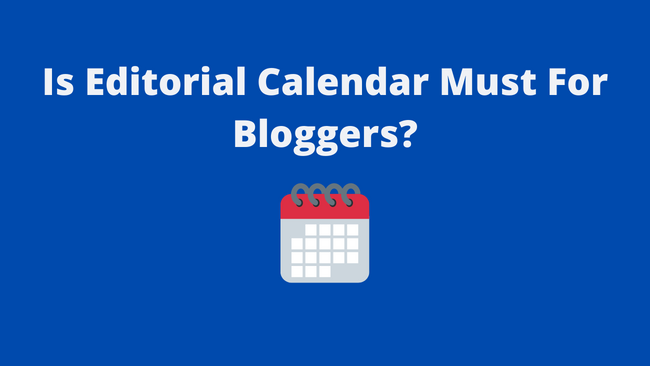
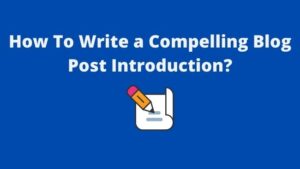
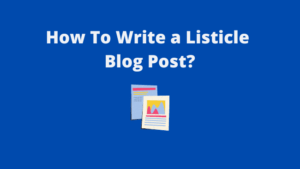

Pingback: How To Start a Food Blog and Earn Too? | StartBlogPro
Pingback: How to Start a Fashion Blog and Make Money? | StartBlogPro